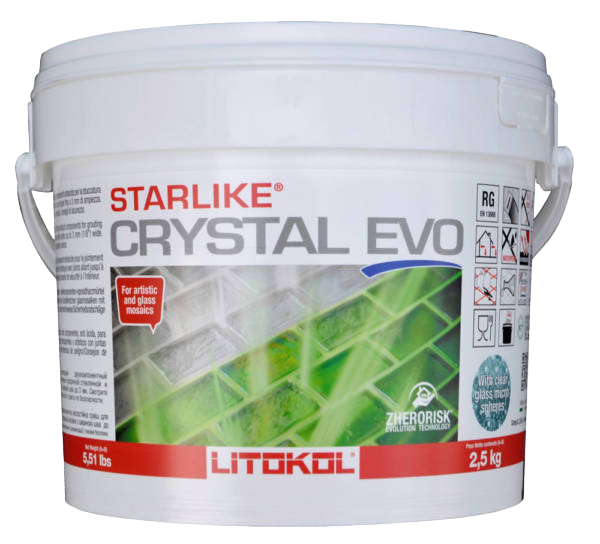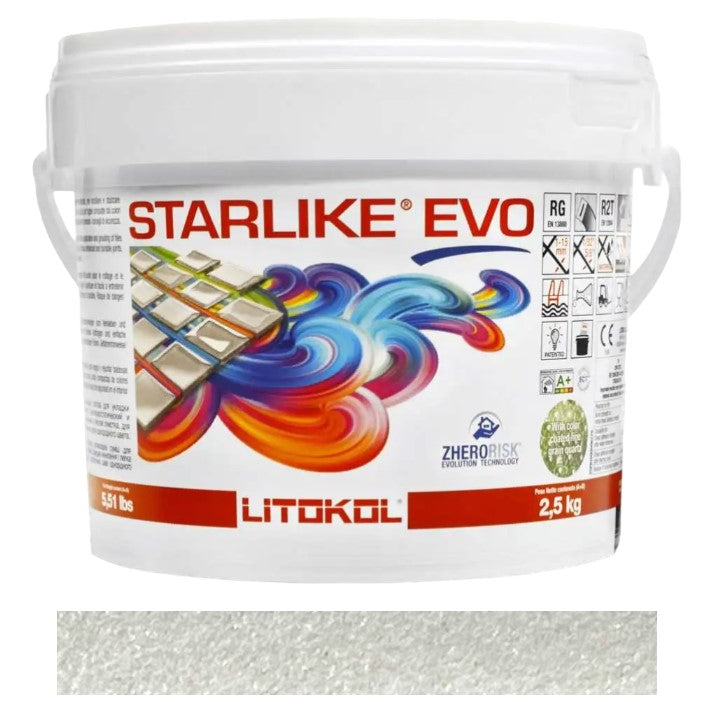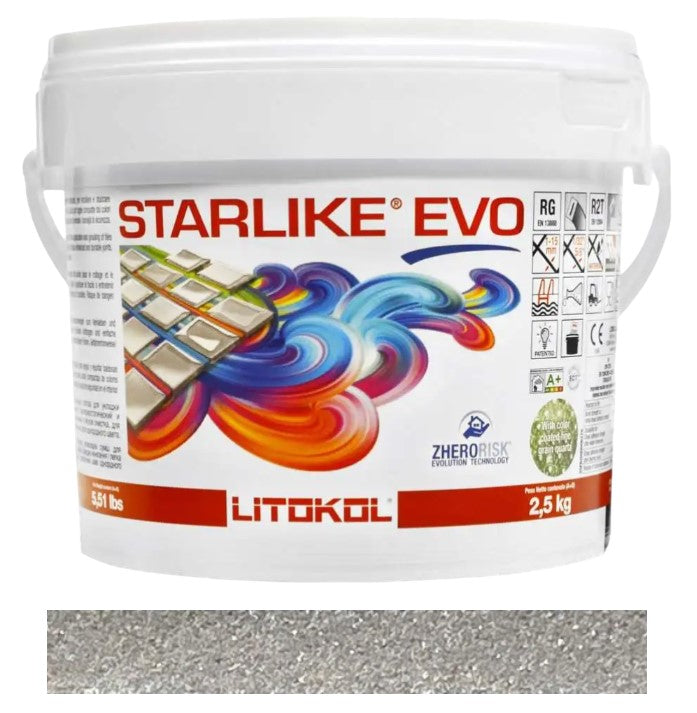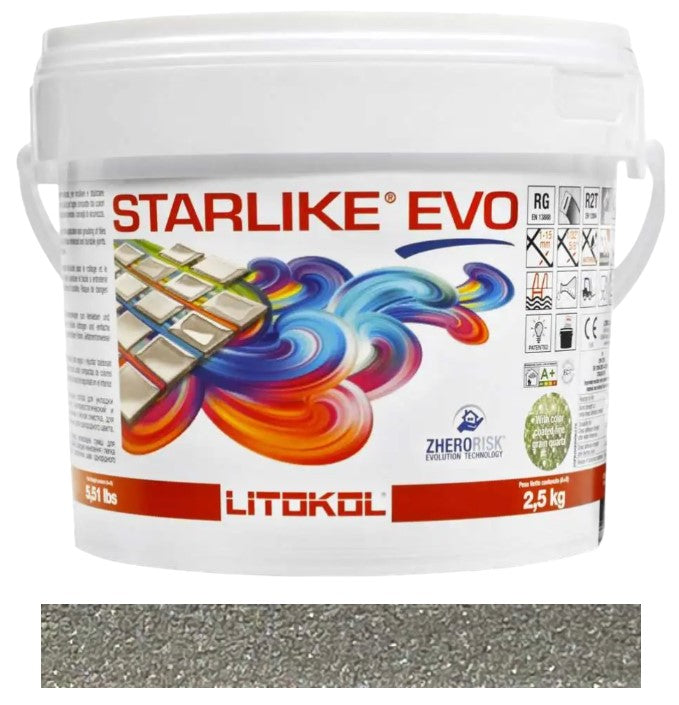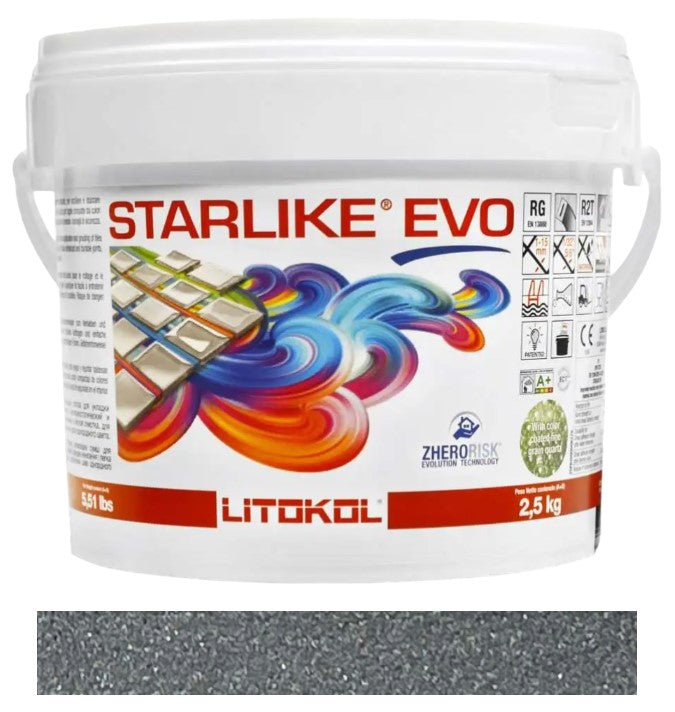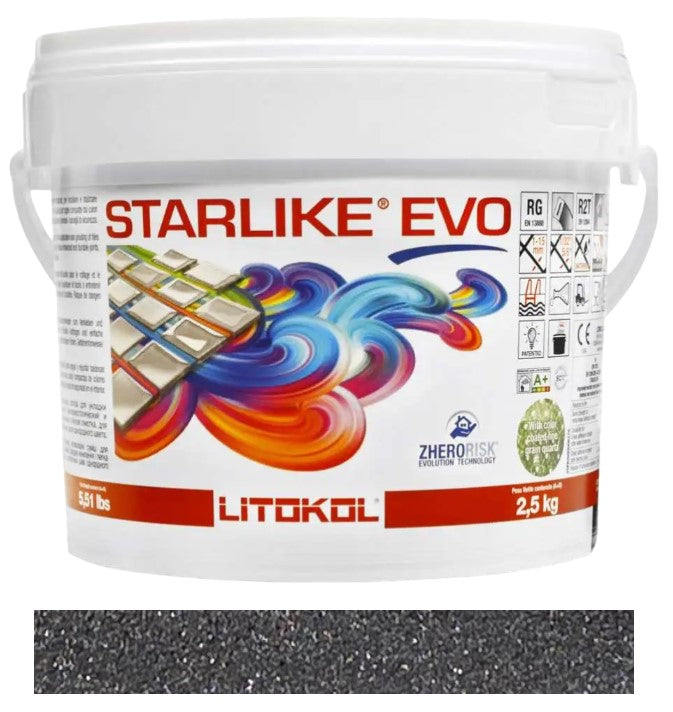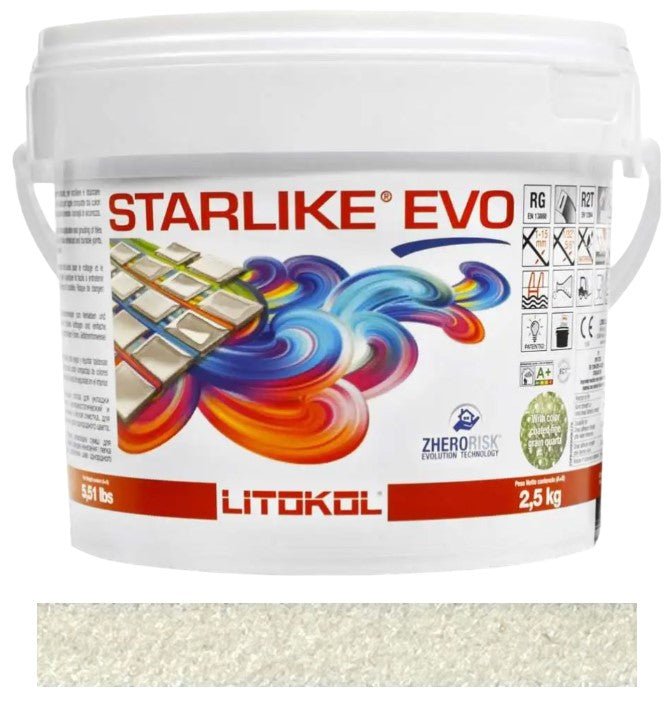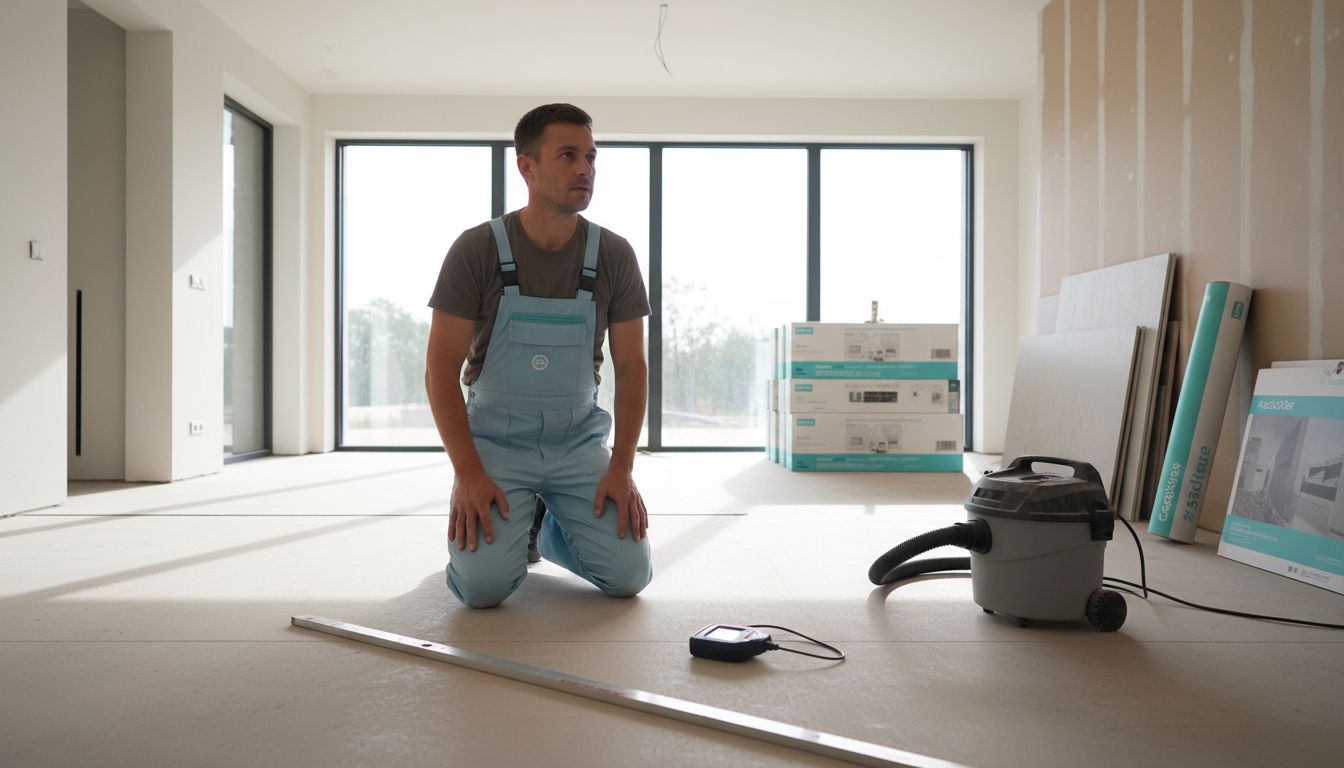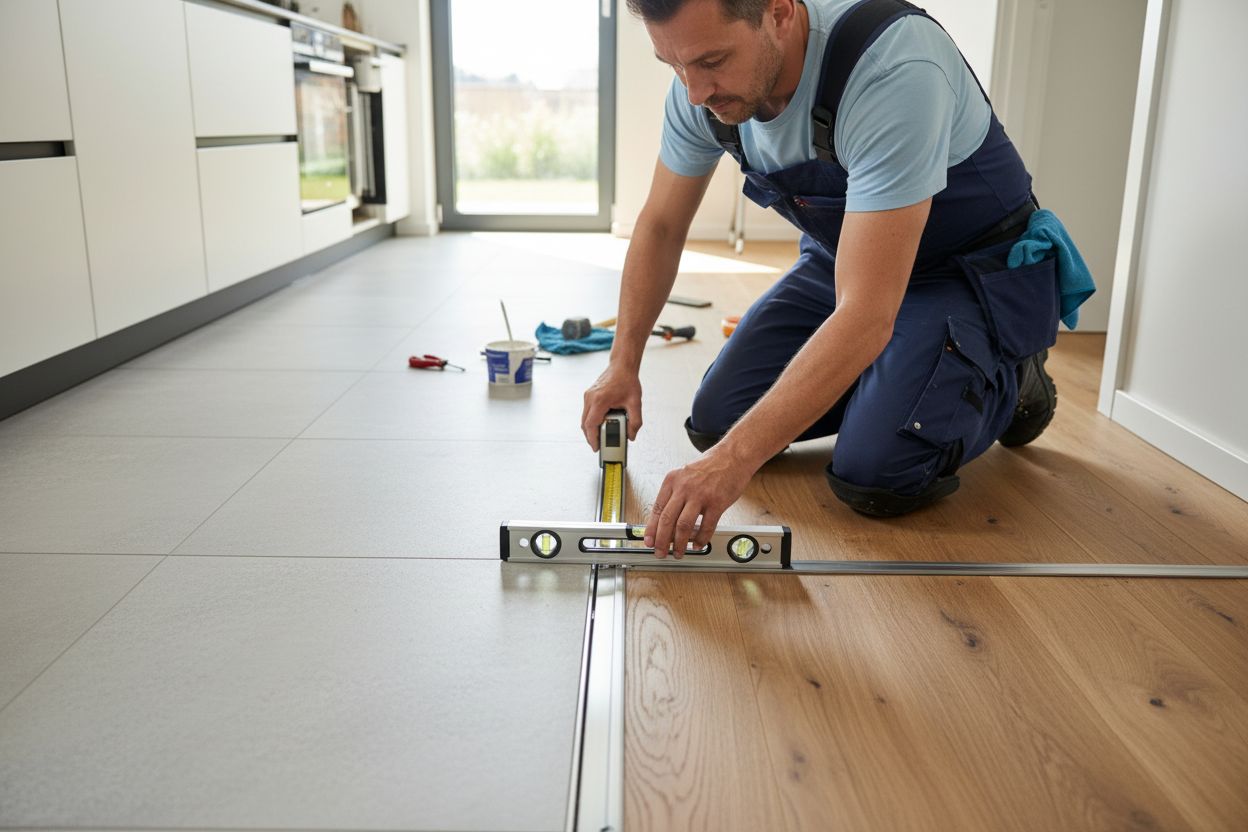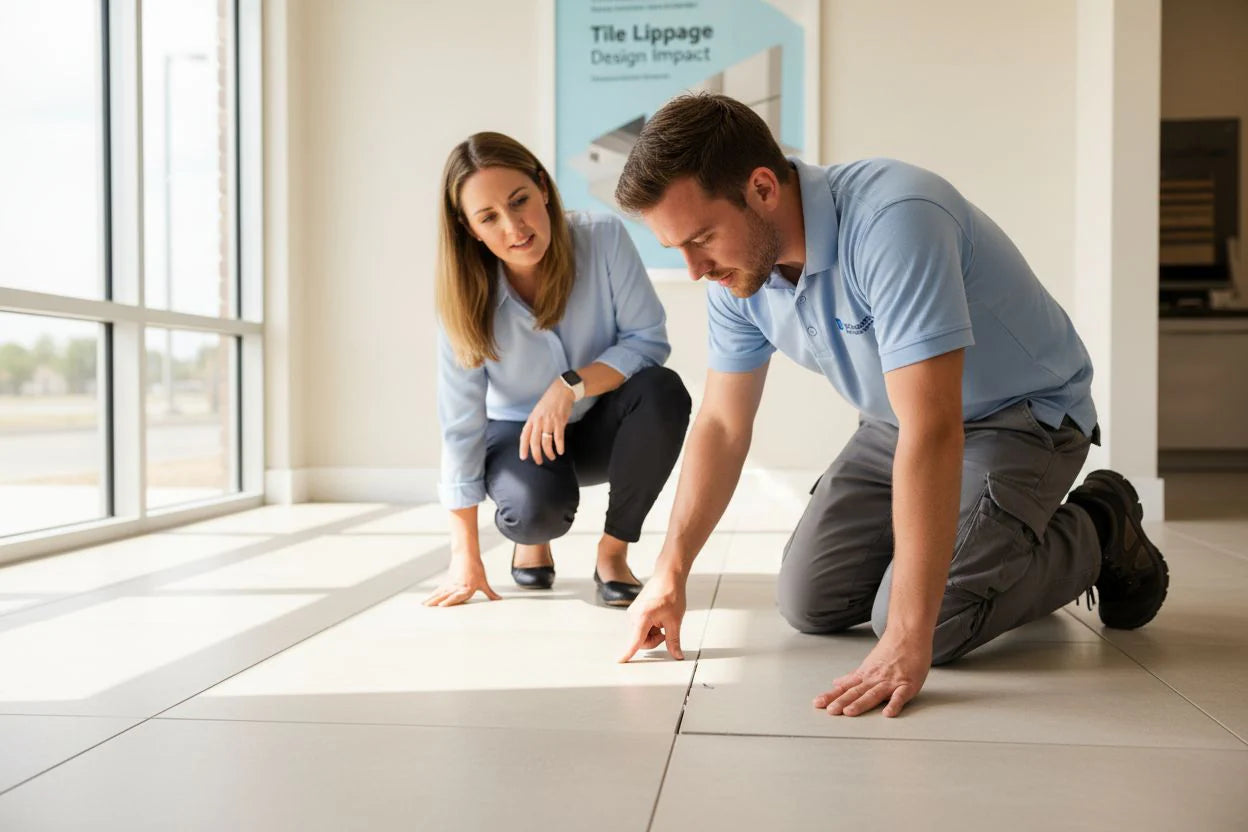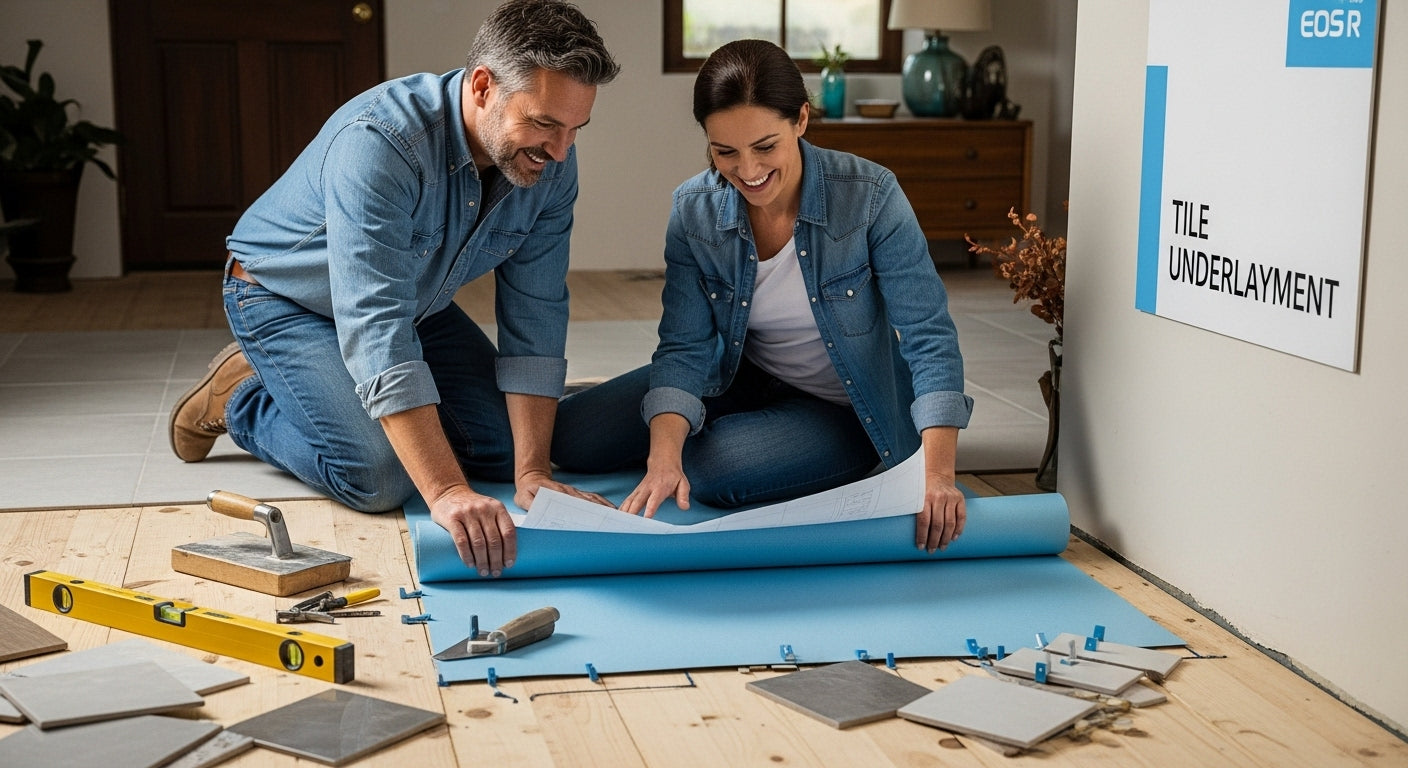Did you know that over 50 percent of homes struggle with mold issues in their bathrooms? This stubborn problem goes far beyond appearance, leading to health risks and costly repairs for homeowners. Understanding the causes behind bathroom mold helps you take control and protect your space from constant moisture, hidden leaks, and poor ventilation that create the perfect breeding ground for unwanted growth.
Table of Contents
- What Causes Mold in Bathrooms
- How Moisture and Humidity Enable Mold
- Key Strategies for Moisture Control
- Best Ventilation Solutions for Bathrooms
- Cleaning Routines and Mold-Resistant Materials
- Choosing Bathroom Tiles to Prevent Mold
Key Takeaways
| Point | Details |
|---|---|
| Moisture Control is Crucial | Maintaining indoor humidity below 50% is essential for preventing mold growth in bathrooms. Implementing effective moisture management strategies helps create a healthier environment. |
| Effective Ventilation | Installing exhaust fans and ensuring proper air circulation significantly reduces humidity and prevents mold proliferation. Regular maintenance of these systems is also important. |
| Targeted Cleaning and Materials | Utilizing antimicrobial cleaning products and selecting mold-resistant materials can help minimize mold risks. Consistent cleaning routines are vital for maintaining a mold-free bathroom. |
| Smart Tile Selection | Choosing non-porous tiles with sealed grout lines is effective in resisting moisture and mold growth. Regular maintenance and proper installation enhance their protective qualities. |
What Causes Mold in Bathrooms
Bathroom mold is not just an aesthetic issue but a serious health concern that develops through specific environmental conditions. Moisture accumulation is the primary catalyst for mold growth, creating an ideal breeding ground for these unwelcome fungi. According to the CDC, mold thrives in environments with high humidity levels, inadequate ventilation, and persistent moisture sources.
The most common culprits behind bathroom mold growth include:
- Excessive humidity: Bathrooms naturally generate significant moisture from showers, baths, and sinks
- Poor ventilation: Stagnant air prevents moisture from evaporating quickly
- Temperature fluctuations: Warm, damp surfaces create condensation that supports mold development
- Water leaks: Hidden pipe leaks or drainage issues provide constant moisture
As research from HVI highlights, organic materials like soap scum, shampoo residue, and skin cells can also serve as nutrient sources for mold. These substances, combined with consistent moisture, create a perfect environment for fungal colonization. Bathrooms with limited natural light and inadequate air circulation are particularly susceptible to rapid mold proliferation.
Recognizing these conditions is the first step in preventing mold growth. Homeowners should focus on managing humidity levels, ensuring proper ventilation, and addressing any water-related issues promptly to maintain a healthy bathroom environment.
How Moisture and Humidity Enable Mold
Understanding the relationship between moisture dynamics and mold growth is crucial for maintaining a healthy bathroom environment. According to the CDC, mold becomes a significant threat when indoor humidity levels exceed 50%, transforming seemingly harmless moisture into a potential breeding ground for fungal development.
The mechanisms through which moisture enables mold growth are complex and multifaceted:
- Condensation formation: Temperature differences create water droplets on surfaces
- Relative humidity: Higher moisture content in air accelerates mold spore activation
- Surface absorption: Porous materials like drywall and grout readily retain moisture
- Microclimate development: Enclosed spaces trap humidity and prevent natural evaporation
Research from HVI emphasizes that moisture accumulation on surfaces provides the critical environmental conditions necessary for mold proliferation. Bathrooms are particularly vulnerable due to frequent water exposure from showers, sinks, and potential plumbing leaks. The combination of warm temperatures and consistent moisture creates an ideal ecosystem where mold can rapidly colonize and spread across different surfaces.
To combat moisture-related mold risks, homeowners must adopt proactive strategies like using exhaust fans, maintaining proper ventilation, and quickly addressing any water intrusion or condensation issues. Understanding these moisture dynamics is the first step in creating an environment that discourages mold growth and protects both structural integrity and personal health.
Key Strategies for Moisture Control
Controlling moisture is a critical defense against mold growth in bathrooms, requiring a comprehensive and strategic approach. According to the CDC, maintaining indoor humidity below 50% is a fundamental strategy for preventing mold proliferation and creating an inhospitable environment for fungal development.
Key moisture control techniques include:
Here’s a summary of key moisture control strategies and their benefits:
| Strategy | Main Benefit | Recommended Action |
|---|---|---|
| Ventilation systems | Reduces humidity | Install and run exhaust fans |
| Dehumidification | Lowers air moisture | Use portable dehumidifiers |
| Regular inspection | Prevents leaks and damage | Check and fix leaks promptly |
| Surface management | Limits moisture accumulation | Wipe down wet surfaces |
| Airflow optimization | Promotes rapid drying | Keep doors and windows open |
- Ventilation systems: Install and use exhaust fans during and after showers
- Dehumidification: Use portable dehumidifiers in high-moisture areas
- Regular inspection: Check for and immediately repair water leaks
- Surface management: Wipe down wet surfaces after bathing
- Airflow optimization: Keep bathroom doors and windows open when possible
Research from HVI emphasizes the importance of proactive moisture management. This involves not just addressing visible moisture but creating a holistic approach that prevents moisture accumulation. Strategic interventions like using moisture-resistant paint, maintaining proper bathroom sealing, and ensuring adequate air circulation can significantly reduce the risk of mold growth.
Implementing these moisture control strategies requires consistent effort and attention to detail. Homeowners should view moisture management as an ongoing process, integrating these techniques into their regular bathroom maintenance routine. By understanding and actively managing moisture levels, you can create a healthier, mold-resistant bathroom environment that protects both your home’s structural integrity and your personal health.

Best Ventilation Solutions for Bathrooms
Effective bathroom ventilation is crucial in preventing mold growth and maintaining a healthy indoor environment. According to the CDC, installing exhaust fans that vent directly outside the home is one of the most effective strategies for removing moisture-laden air and reducing the risk of mold proliferation.
Key ventilation solutions include:
- Exhaust fans: Install high-quality, moisture-resistant fans
- Timed ventilation: Run fans during and for 20-30 minutes after showers
- Window strategies: Utilize windows for natural cross-ventilation
- Ducting improvements: Ensure exhaust fans vent completely outside
- Humidity sensors: Consider fans with built-in humidity detection
Research from HVI emphasizes that proper ventilation involves more than just installing a fan. Homeowners must ensure vents remain unobstructed and fans are functioning correctly. When designing bathroom ventilation, consider factors like fan size, airflow capacity, noise levels, and energy efficiency. Designing small bathrooms with effective ventilation requires strategic planning to maximize air circulation without compromising limited space.
Implementing comprehensive ventilation solutions is an ongoing process. Regular maintenance, such as cleaning fan grilles, checking duct connections, and replacing filters, ensures optimal performance. By prioritizing proper air movement and moisture control, you can create a bathroom environment that remains fresh, dry, and resistant to mold growth.
Cleaning Routines and Mold-Resistant Materials
Preventing mold growth requires a strategic approach combining targeted cleaning techniques and innovative material selection. According to the CDC, regular cleaning with specialized mold-killing products and incorporating mold inhibitors can significantly reduce the risk of fungal development in bathroom environments.
Effective cleaning and material strategies include:
- Antimicrobial cleaning products: Use EPA-registered mold and mildew removers
- Protective coatings: Apply mold-resistant sealants on tiles and grout
- Material selection: Choose moisture-resistant drywall and paint
- Regular maintenance: Clean and dry surfaces thoroughly after use
- Preventative treatments: Use fungicidal sprays in high-moisture areas
Research from HVI emphasizes the importance of utilizing mold-resistant materials and consistent cleaning protocols. When selecting bathroom materials, look for products specifically designed to inhibit mold growth. Effective waterproofing techniques for bathroom tiles can provide an additional layer of protection against moisture penetration and potential mold development.
Implementing a comprehensive cleaning routine requires discipline and the right approach. Homeowners should establish a weekly cleaning schedule, focusing on thorough drying and immediate attention to any signs of moisture or potential mold growth. By combining proactive material selection with consistent maintenance, you can create a bathroom environment that remains clean, dry, and resistant to mold proliferation.
Choosing Bathroom Tiles to Prevent Mold
Selecting the right bathroom tiles is a critical strategy in preventing mold growth and maintaining a healthy bathroom environment. According to the CDC, non-porous tiles with properly sealed grout lines can significantly minimize moisture absorption, creating a robust defense against potential fungal development.
Key considerations when selecting mold-resistant tiles include:
- Material composition: Choose ceramic, porcelain, or glass tiles
- Surface texture: Opt for smooth, non-porous surfaces
- Grout quality: Select epoxy or sealed grout options
- Color selection: Lighter colors help reveal early moisture signs
- Tile size: Larger tiles mean fewer grout lines and less moisture retention
Research from HVI emphasizes that ceramic and porcelain tiles with sealed grout lines are particularly effective at preventing water penetration. Mastering sealing techniques for tiles and grout can provide homeowners with additional insights into maintaining a moisture-resistant bathroom surface.
Ultimately, tile selection is about creating a comprehensive moisture management strategy. Beyond material choice, proper installation, regular maintenance, and consistent cleaning are essential in preventing mold growth. By combining thoughtful tile selection with proactive care, you can create a bathroom environment that remains beautiful, hygienic, and resilient against moisture-related challenges.
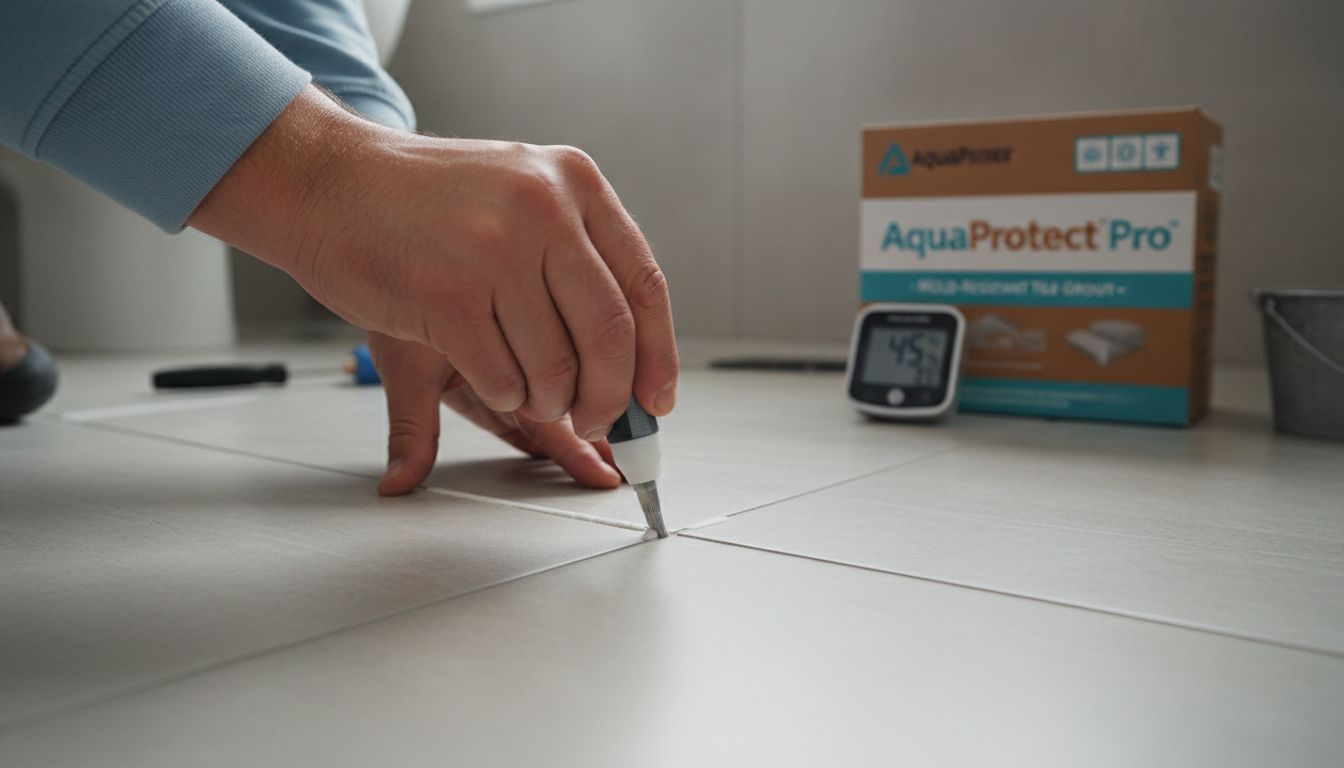
Protect Your Bathroom from Mold with Stylish, Durable Tiles
Mold growth in bathrooms is a tough challenge caused by excess moisture and poor ventilation. The article highlights common issues like porous grout and materials that trap moisture, creating the perfect environment for mold. You want a beautiful bathroom that not only looks great but also stands strong against mold and moisture damage. Choosing the right tiles can make all the difference by reducing water absorption and making cleanup easier.
Discover a wide selection of mold-resistant ceramic and porcelain tiles at TileChoices.com, where quality meets style. Our tiles feature smooth, non-porous surfaces and sealing options designed to keep your bathroom dry and fresh. Don’t wait until mold causes costly repairs or affects your health. Take action now to transform your bathroom with solutions that combine durability and easy maintenance.
Explore our comprehensive tile collections to find options that help prevent mold and moisture buildup. Start your journey toward a mold-resistant bathroom today by visiting TileChoices.com. Protect your home while elevating your style—shop now and experience the difference.
Frequently Asked Questions
What causes mold to grow in bathrooms?
Mold growth in bathrooms is primarily caused by moisture accumulation, high humidity levels, poor ventilation, temperature fluctuations, and water leaks. Organic materials like soap scum and skin cells can also serve as nutrient sources for mold.
How can I control humidity levels in my bathroom?
To control humidity levels, use exhaust fans during and after showers, utilize dehumidifiers, conduct regular inspections for leaks, wipe down wet surfaces, and ensure proper airflow by keeping doors and windows open when possible.
What are effective ventilation solutions for preventing mold?
Effective ventilation solutions include installing high-quality exhaust fans that vent outside, using fans with built-in humidity sensors, ensuring ducting is effective, and utilizing natural ventilation strategies like opening windows for cross-ventilation.
What cleaning routines can help prevent mold in the bathroom?
Implement a cleaning routine using antimicrobial cleaning products, regularly apply mold-resistant sealants, choose moisture-resistant materials, and maintain surface cleanliness by drying surfaces after use and using preventative fungicidal treatments.


